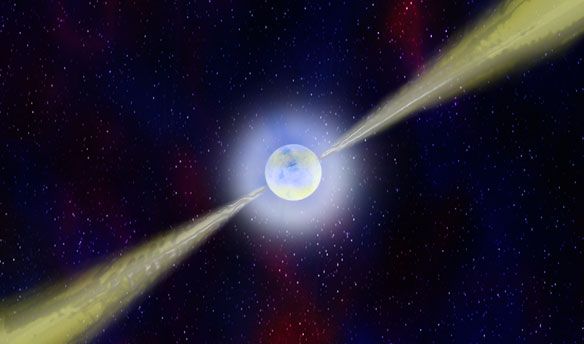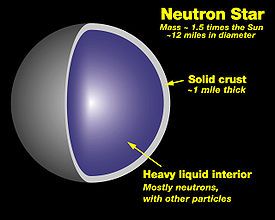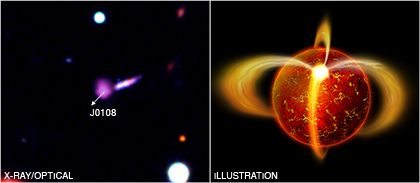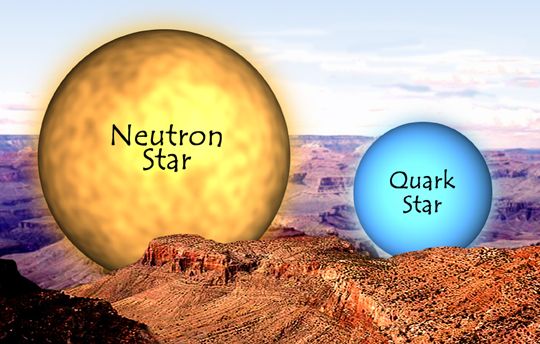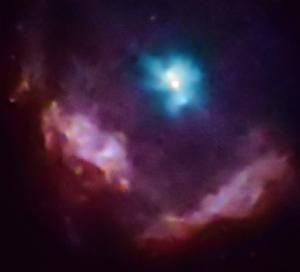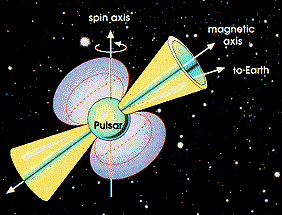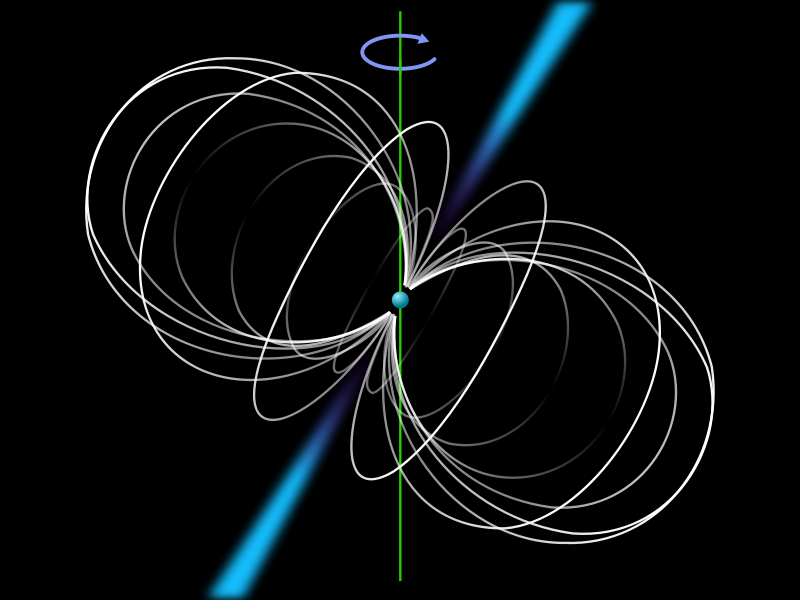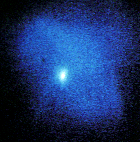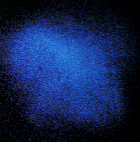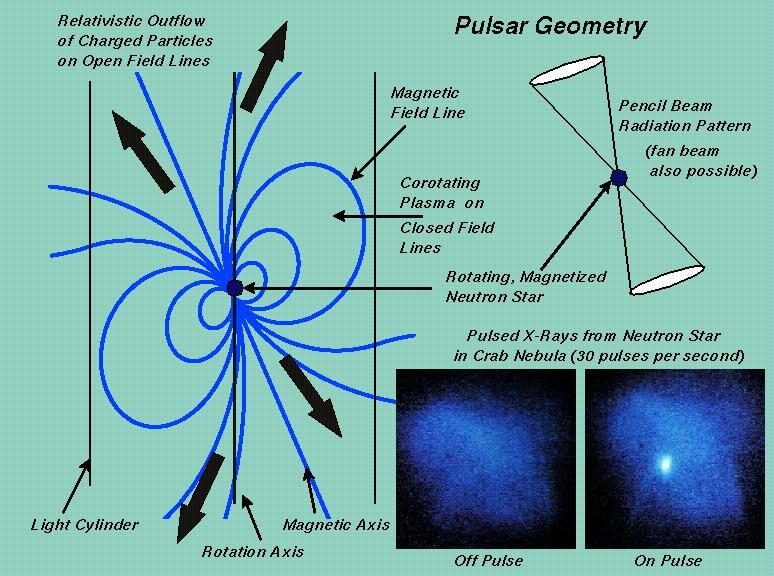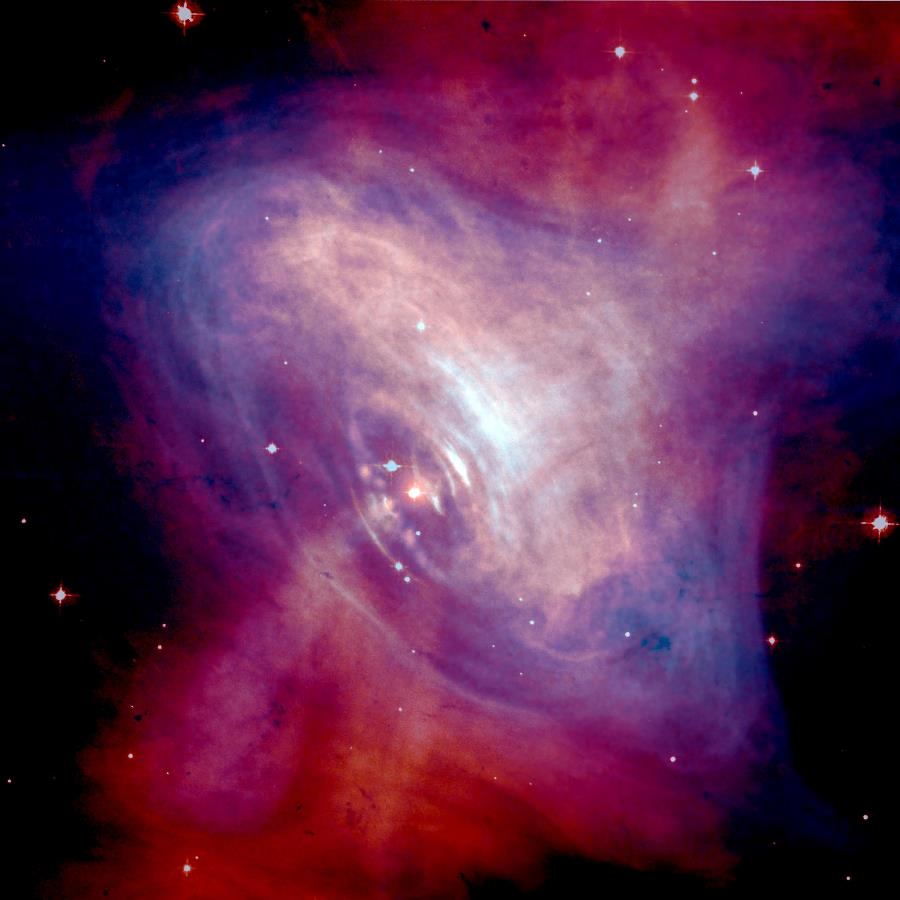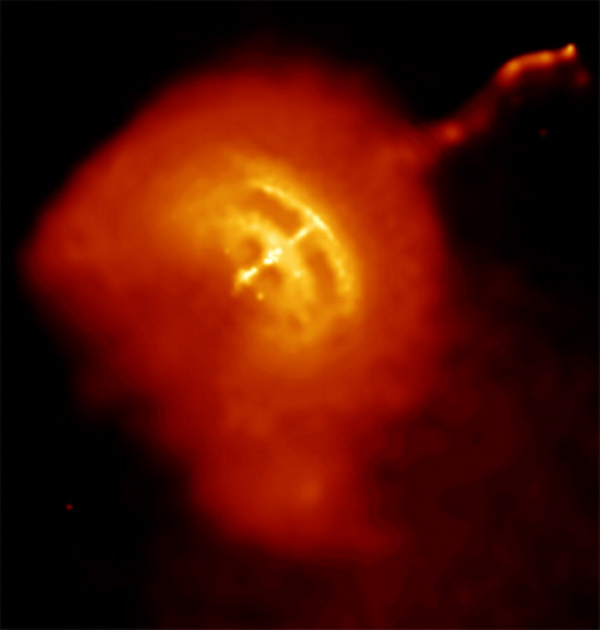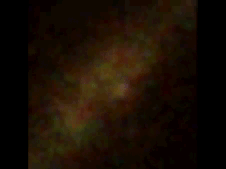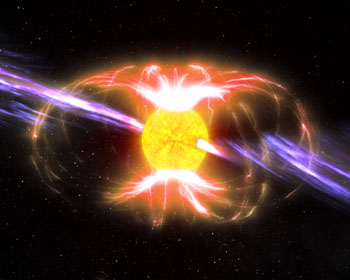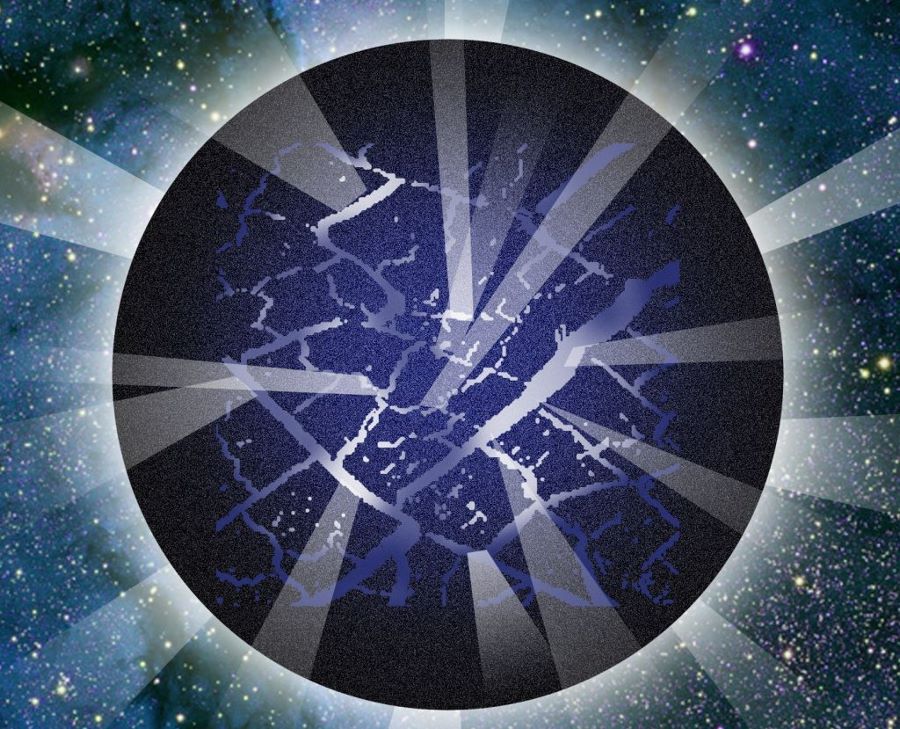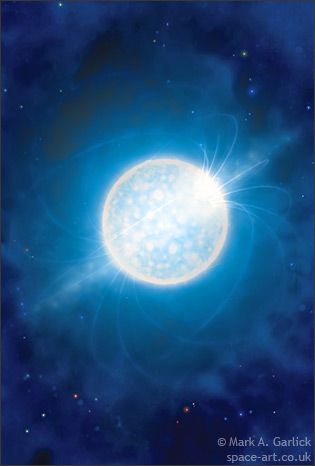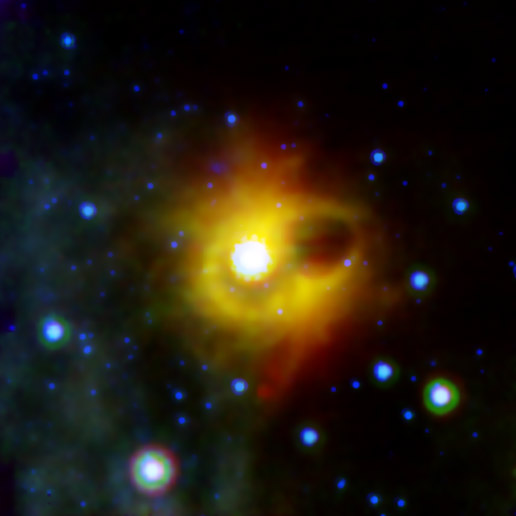|
Neutron Stars, Pulsars, and Magnetars |
||||||||
JKROG08's Collection
|
||||||||
| From
AboveTopSecret.com Thread:
Neutron Stars, Pulsars, and Magnetars Posted by jkrog08, on June 20, 2009 at 21:57 GMT
I have decided to create this thread in an attempt to shed some light on a very interesting astronomical phenomenon that a lot of the general public are unfamiliar with unless they have interests in astronomy or are in formal classes. I will be covering neutron stars, a couple kinds of pulsars, and magnetars. While all of these are stars, they are very different from the normal visualization of a star many people imagine when thinking about one. These stars are just another shining example of the complete strangeness and wonder in the Universe. So without further hesitation let’s begin! Chapter Summary |
||||||||
|
1.Neutron Stars A neutron star is the remaining core, or remnant of a massive star that is much more massive than our Sun, such as a Red Giant that has ended its’ life cycle in a specific type of supernova that is caused by what is known as a core collapse, which is caused by the gravity of the star being to much to support itself anymore. The remaining core is normally no larger than a city like Manhattan on Earth but contains around 1.4 times the mass of our Sun! If you could take a teaspoon and ‘scoop the matter’ out of the neutron star it would weigh one billion tons! A neutron star’s magnetic field is about 1 quadrillion times stronger than Earths. A neutron star is still very hot despite plasma (solar atmosphere) no longer being around it. A neutron star is one of many ends a star can take, even more massive stars that have cores of around 5 solar masses and higher end up as the famous black holes, but we will not get into those here. The name “neutron star” comes from the fact that the star is comprised of nearly all neutrons. The escape velocity of a neutron star is 33% the speed of light, so in a way you could say that the neutron star is the stage right ‘below’ a black hole due to its’ extreme gravity caused by its very high mass. Neutron stars do rotate rather quickly, usually several times a second, with some rotating several hundred times a second. This is caused by the conservation of angular momentum. The closest known neutron star to Earth is PSR J0108-1431 , which is a pulsar (next chapter) and is only 280 light years away. There are over 1300 confirmed neutron stars and a believed 10^5 in the Milky Way.
..
..
Chandra.harvard.edu , the quark star pictured is only theoretical and not relevant to this thread. |
||||||||
|
2.Pulsars Another type of neutron star, pulsars are a rapidly spinning neutron star that shoots jets of X-rays, radio waves, and sometimes gamma rays at very near the speed of light (186,000 mps) from its’ strong magnetic poles. This type of neutron star also has a powerful magnetic field. The observed time between their pulses is between 1.4 milliseconds and 8.5 seconds. Some pulsars have a rotational period as accurate as an atomic clock. A pulsar is best described as exactly analogous to a lighthouse in how it looks and behaves. Obviously the name “pulsar” comes from how the star pulses light and other electromagnetic radiation as it spins. Some pulsars, such as PSR B1257 +12 are known to have planets orbiting them, which are calledpulsar planets. The exact mechanism of how exactly pulsars emit beams of electromagnetic radiation is still unknown, although they have been known to exist since being discovered in July of 1967. It is believed to possibly result from complex electromagnetic processes that take place at the highly magnetized poles of a neutron star. Although the exact mechanism is still not understood. Sometimes pulsars will emit EM radiation in the visible light spectrum of the EM field.
Image courtesy of sciencedaily.com There are several different sub categories of pulsars, millisecond pulsars are simply pulsars with millisecond rotational periods, so they obviously spin very quickly. These are normally found in a binary star system and are believed to be accreting, or pulling material to them from its’ sister star. As mentioned above, some pulsars emit radiation in the radio band of the spectrum, those are called radio pulsars and are thought to be powered by their rapid rotational period. Some emit the electromagnetic radiation in the X-ray band of the spectrum, those are accordingly called X-ray pulsars, and are thought to be powered by the accretion of a sister star in its’ binary orbit. Gamma ray pulsars are pulsars that emit radiation in the gamma band of the spectrum. Binary pulsars are pulsars that have a companion star, usually another pulsar, white dwarf, or neutron star. Binary pulsars mainly emit X-ray radiation.Anomalous X-ray pulsars are now believed to actually be magentars (next chapter) because of their very strong magnetic fields and slow rotational periods of 5 to 12 seconds. It is now commonly believed that pulsars and magentars are actually the same thing, just in different stages of neutron star evolution. Further more is postulated that a neutron star can change from a pulsar to magnetar and vice versa, the ones that have been observed doing so are called periodic pulsars. However, one of these flashing lighthouses has surprised observers… it exploded, blasting vast amounts of energy into space, and then continued to spin and flash as if nothing had happened. This phenomenon has recently been observed by NASA's Rossi X-ray Timing Explorer (RXTE) and has been backed up by data from the Chandra X-ray Observatory.Rotating Radio Transients (RRAT) is also evidence for neutron stars being highly transistionable between pulsars and magnetars. As their rotation rate is like a magnetar but they emit very brief and very ‘bright’radio pulses. It is also important to note that astronomers believe that exploding pulsars are responsible for a large amount of gamma ray bursts. It is also important to reiterate that pulsars can and do emit more than one specific band of EM radiation, although one band is normally in much higher concentration than others.
..
..
....
Some notable pulsars…
|
||||||||
....
The Vela Pulsar, a neutron star
corpse left from a titanic stellar supernova explosion, shoots through
space powered by a jet emitted from one of the neutron star's rotational
poles. Now a counter jet in front of the neutron star has been imaged by
the Chandra X-ray observatory. The Chandra image above shows the Vela Pulsar
as a bright white spot in the middle of the picture, surrounded by hot
gas shown in yellow and orange. The counter jet can be seen wiggling from
the hot gas in the upper right. Chandra has been studying this jet so long
that it's been able to create a movie of the jet's motion. The jet moves
through space like a firehose, wiggling to the left and right and up and
down, but staying collimated: the "hose" around the stream is, in this
case, composed of a tightly bound magnetic field.
Date: 6 July 2003 Source:
http://heasarc.gsfc.nasa.gov...
This imgae shows pulsed gamma
rays from the Vela pulsar as constructed from photons detected by Fermi's
Large Area Telescope. The Vela pulsar, which spins 11 times a second, is
the brightest persistent source of gamma rays in the sky. The bluer colour
in the latter part of the pulse indicates the presence of gamma rays with
energies exceeding a billion electron volts (1 GeV). For comparison, visible
light has energies between two and three electron volts. Red indicates
gamma rays with energies less than 300 million electron volts (MeV); green,
gamma rays between 300 MeV and 1 GeV; and blue shows gamma rays greater
than 1 GeV. The image frame is 30 degrees across. The background, which
shows diffuse gamma-ray emission from the Milky Way, is about 15 times
brighter here than it actually is.
Date: 30 October 2008 Source:
http://svs.gsfc.nasa.gov/goto?10426 |
||||||||
|
3.Magnetars ....
Magnetars are yet another manifestation a neutron star can take. Magnetars have an extremely powerful magnetic field, hence the name, when it decays it releases powerful amounts of X-rays and gamma rays. A magnetar does not pulse ‘beacons’ of radio or light energy from its poles like a pulsar. Like neutron stars and pulsars, a magnetar is no bigger than 12 miles in diameter but extremely dense with mass. They rotate very slowly compared to pulsars, although some do not as we will see later on. The closest discovered magnetar to Earth is 13,000 lightyears distant.Magnatars have a relatively short life of around 10,000 years, after which they become ‘inactive’ and essentially revert back to a neutron star. The magnetic fields of magnetars can often reach ten gigateslas in strength, for comparison the Earth has a field strength of 30-60 microteslas. It is thought that the field is so strong it would kill humans within 1000 kilometers of it. Also it is thought that a magnetar could wipe all magnetic credit card bands clean from a distance of halfway to the Moon, or about 100,000 miles. It is thought that one out of ten supernovae result in a magnetar forming, as opposed to the more common neutron star or pulsar. As of May 2007 only twelve magnetars have been confirmed, with more awaiting confirmation. Magnetars are also thought responsible for GRB’s (gamma ray bursts) and soft gamma repeaters. The magnetars magnetic field is so strong it twists its own crust which produces currents that form electron clouds around the star, which interact with the radiation coming from the stellar surface to form X-rays and gamma rays. Stellarquakes, sometimes called “Magnetar Quakes” or “Pulsar Quakes” occur in both a magnetar and a pulsar. They are thought to be caused by huge stresses exerted on the surface of the neutron star produced by twists in the ultra-strong interior magnetic fields. Sometimes the quakes can be so bad that they cause the very powerful GRBs. Sometimes magnetars and pulsars under go what is called a glitch, which is the sudden speeding up of the stars rotational period and a large increase in energy. It can last from days to years. It is thought that this is another cause of starquakes, particularly in pulsars. In 2004 a quake on a pulsar 50,000 lightyears away arrived in our solar system, temporarily knocking out every X-ray satellite in space. Had this event happened within ten lightyears from Earth it would have caused a mass extinction similar to the Permian Extinction. This should show you how much energy is expended by these stars. Luckily now astronomers and astrophysicist can now predict these quakes: Scientists have discovered how to predict earthquake-like events in pulsars. These explosive episodes likely crack a pulsar's dense crust and momentarily bump up its spin rate.heasarc.gsfc.nasa.gov...
As mentioned earlier it now appears that pulsars and magnetars can transition between each phase, possibly many times. Like pulsars, magnetars have migrating poles, similar to what we see here on Earth. On February 21, 2008 it was announced that NASA and McGill University researchers had discovered a neutron star that temporarily changed from a pulsar to a magnetar. This indicates that magnetars are not merely a rare type of pulsar but may be a (possibly reversible) phase in the lives of at least some pulsars.
..
This image shows a ghostly ring
extending seven light-years across around the corpse of a massive star.
The collapsed star, called a magnetar, is located at the exact center of
this image. NASA's Spitzer Space Telescope imaged the mysterious ring around
magnetar SGR 1900+14 in infrared light. The magnetar itself is not visible
in this image, as it has not been detected at infrared wavelengths (it
has been seen in X-ray light).
Source http://www.nasa.gov/...
Credit: NASA/JPL-Caltech
Image showing a GRB from a magnetar in the Aquila constellation courtesy of wikipedia.org , notice the magnetic field looking rings around the star. They are 7 lightyears in diameter. Well that about wraps up the thread, realize that this was in a introduction type format and there are many more things that were not covered. For further information I would suggest any of the references I used or to simply Google any information. You can also consult your local library or school library if you are in high school or college. Neutron stars, pulsars, and magnetars are, as we’ve seen, some very interesting entities in our ever growing universe of wondrous and strange things. Astronomers and astrophysicist are constantly learning new things about these stars and other phenomena in the Universe. I hope that this information and the following video will help shed some light on these things and maybe get those who aren’t interested in space and physics more interested. The following video explains neutron stars, pulsars, magnetars, and periodic pulsars. YouTube is a great tool to learn some basic to intermediate information from, especially the videos from the series The Universe. I hope everyone enjoys the videos. |
||||||||
|
Amazing Cosmic Objects: Pulsars, Neutron Stars, Quasars, & Magnetars Published on Apr 10, 2016 **For more good videos I suggest anything from The Universe series.:up: |
||||||||
| References and Related Threads
References: Related Threads: My Related Threads: |
||||||||
| You may use this content as long as you comply with our Creative Commons Deed by properly sourcing the author as owner, source the AboveTopSecret.com website as co-owner, do not create a derivative work, and do not use it for commerical purposes. | ||||||||
| FAIR USE NOTICE: This page contains copyrighted material the use of which has not been specifically authorized by the copyright owner. Pegasus Research Consortium distributes this material without profit to those who have expressed a prior interest in receiving the included information for research and educational purposes. We believe this constitutes a fair use of any such copyrighted material as provided for in 17 U.S.C § 107. If you wish to use copyrighted material from this site for purposes of your own that go beyond fair use, you must obtain permission from the copyright owner. | ||||||||
|
|

